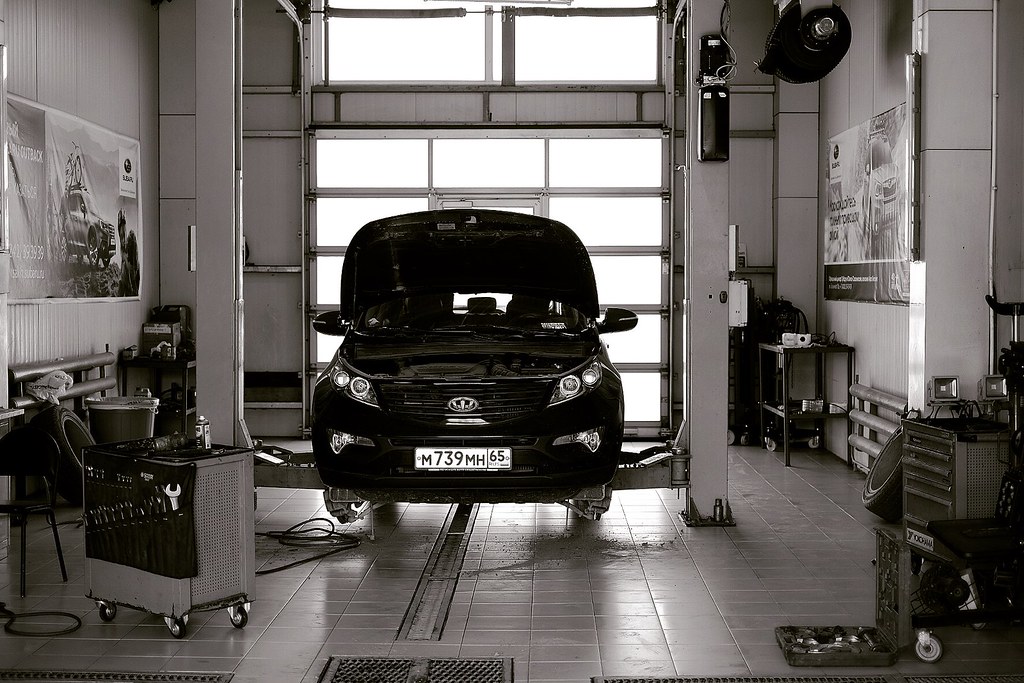
With the rising cost of car repairs, it’s incredibly tempting to roll up your sleeves and tackle vehicle problems yourself. The internet is awash with countless “do it yourself” videos and guides, promising easy fixes and significant savings. While changing a spark plug or installing winter tires might be within your grasp, the allure of saving a few bucks on more complex issues often overshadows the very real dangers and potential for costly mistakes that lie beneath the hood.
However, there are certain automotive repairs that absolutely demand professional expertise. Attempting these high-stakes fixes without specialized training, tools, and a deep understanding of intricate mechanical systems isn’t just a gamble; it’s a serious risk to your vehicle’s longevity, your financial well-being, and, most importantly, your safety. Ignorance in these areas can transform a minor issue into a catastrophic failure, leading to exponentially higher repair bills or even irreparable damage.
This isn’t about discouraging the eager DIYer; it’s about equipping you with the practical, actionable advice you need to make informed decisions. We’re going to demystify why some repairs are simply beyond the scope of the average home mechanic. Let’s delve into the first seven critical car repairs that you should always entrust to a licensed and certified professional.

1. **Transmission Repairs**
Your car’s transmission is arguably the most complex part of the entire vehicle, often referred to as the “Rubik’s Cube of most vehicles.” It serves a profoundly important role, meticulously transferring power from the engine to the wheels to engage the car in forward drive or reverse. An automatic transmission, for example, can contain roughly 800 intricate parts, including gears, pumps, clutches, and a torque converter, all of which must be perfectly aligned and functioning in concert to ensure smooth operation.
Attempting to repair or replace a transmission without the requisite expertise is a venture fraught with peril, usually with disastrous results. You risk misaligning gears, damaging key components, or even compounding the original problem significantly. Diagnosing transmission issues accurately also demands specialized diagnostic tools and a depth of skill that most DIY mechanics simply do not possess.
Even seemingly minor tasks, such as changing the transmission fluid, are complicated and require a specialized procedure undertaken by a mechanic. A professional repair can cost anywhere from $2,000 to $3,000, while a complete replacement could range from $4,500 to $6,000. If you botch the repair, the cost to sort out the mess will be significantly more than if you had just gone to a qualified mechanic in the first place.
Undertaking this complicated repair or replacement yourself is truly the “Kamikaze mission of home auto repairs.” For any signs of trouble, such as grinding noises, shaking, poor driving performance, or the vehicle not moving when placed in gear, it’s unequivocally best to take your car to a licensed garage. Your vehicle’s very ability to move depends on this crucial system.
Read more about: Don’t Let These Simple Mistakes Cost You! How to Avoid Instantly Voiding Your Home Warranty
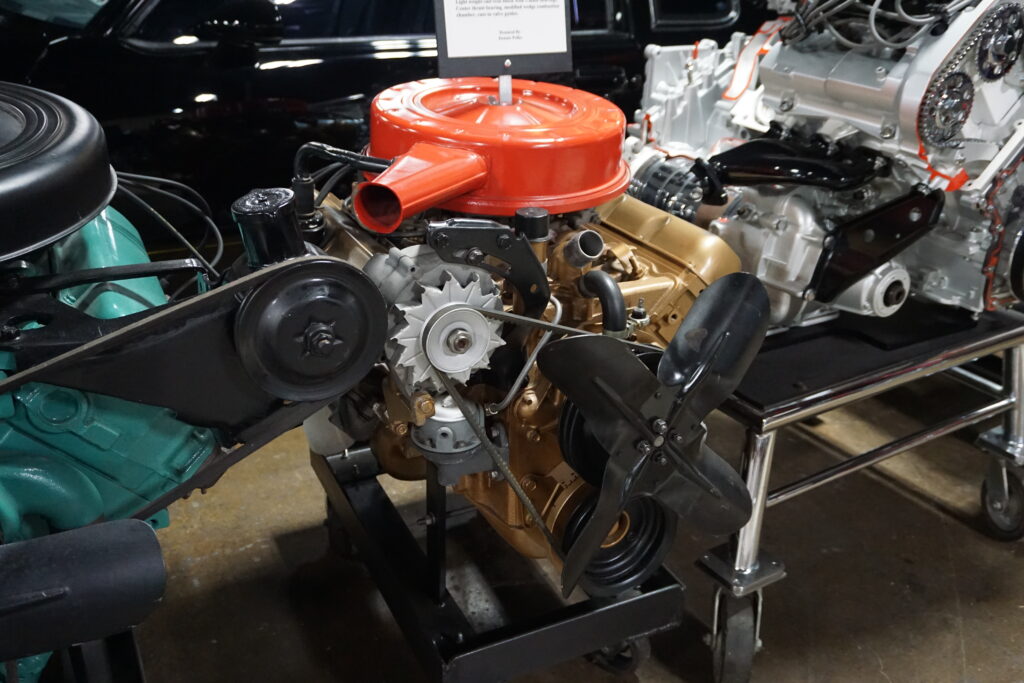
2. **Engine Overhaul/Major Engine Repairs**
The engine is undeniably the heart of your vehicle, a complex system designed to operate with extreme precision. An engine overhaul involves the formidable task of taking this intricate system apart and meticulously rebuilding it, which is far from a simple “remove and replace” job. This process delves into the core mechanics, dealing with pistons, valves, bearings, and intricate timing mechanisms that must be installed and calibrated with absolute accuracy.
Even the slightest mistake during reassembly could lead to catastrophic engine failure. Unless you are a certified mechanic equipped with a complete set of professional tools and extensive experience, major engine repairs, including those involving pistons, gaskets, sensors, or any other critical engine component, are best left to the experts. Poking around under the hood without proper training can lead to significant damage.
Professional engine rebuilds typically range from $2,500 to $4,000, but the financial and operational price you pay for DIY errors could easily far exceed this amount. For instance, if you screw up a radiator replacement, it could cause your engine to blow, and a new engine costs between $5,000 and $7,000 in most cars today. This is not a beginner job; it requires immense training.
If you experience symptoms like knocking noises, a loss of power, an oil pressure warning light, or an engine that runs or idles rough, it’s time to take your vehicle to a qualified mechanic for diagnostics and repair. Trusting these essential repairs to professionals ensures the engine’s longevity and your car’s continued performance.

3. **Timing Belt Replacement**
The timing belt is an absolutely essential component that meticulously keeps your engine operating, ensuring that your engine’s valves open and close at precisely the right time during each cylinder’s intake and exhaust strokes. If you own your car long enough, eventually this critical belt will need to be replaced, but attempting this repair yourself is never advisable.
One of the primary reasons is the sheer complexity of accessing the timing belt. Replacing it typically requires about half of your car’s engine to be disassembled, a daunting task for even an experienced home mechanic. The challenge doesn’t end with disassembly; even if you manage to successfully replace the belt, the chances of you reassembling the engine perfectly are slim at best. The slightest mistake, even being “one tooth off,” could do long-term and irreparable harm to your car’s engine, potentially causing “catastrophic engine failure due to pistons colliding with valves.”
The cost implications are also significant. Replacing a timing belt before it breaks usually costs between $500 to $1,000. However, if the timing belt breaks and leads to damage with the valves, pistons, or water pump, the repair bill could easily top $2,000 or more. The cost to fix an engine you’ve damaged while attempting a DIY timing belt replacement yourself could be significantly higher.
This repair demands precision and expertise that only a certified mechanic possesses. It’s a time-consuming job where any error will cost you big. If your timing belt is due for replacement, or if you notice rattling noises from your engine, multiple engine misfires, or your vehicle isn’t starting, trust a professional to handle this vital maintenance task to prevent dire consequences.
Read more about: 13 Essential Red Flags: Your Step-by-Step Guide to Inspecting a Used Performance Car Like a Pro

4. **Fuel System Repairs**
The fuel system is one area of your car where you absolutely do not want to experiment unless you possess the proper training and equipment. This intricate system includes several critical components: the gas tank, fuel filter, fuel pump, fuel lines, and injectors. The entire system operates under high pressure, making it inherently dangerous to work on without strict precautions.
Even a small mistake during a repair can lead to hazardous fuel leaks, which can quickly escalate into a devastating vehicle fire. The high volatility of gasoline makes this one of the most perilous systems to tamper with. Furthermore, the components within the fuel system, particularly the fuel pump, are “extremely sensitive and precise pieces of equipment.”
Attempting to repair or replace any of these components on your own can compromise the integrity of the entire system, potentially causing safety issues or damaging other parts of your vehicle. Errors can also adversely affect your car’s fuel efficiency, emissions, or overall performance. If a fuel pump repair is done incorrectly, it can lead to “catastrophic failure in a vehicle” and the car may need to be “completely scraped.”
Professional installation of a new fuel pump typically costs between $1,500 to $2,000, a hefty price tag that might tempt DIY efforts, but the risks far outweigh any perceived savings. If you smell gasoline, experience difficulty starting your car, power surges, decreased fuel efficiency, or hear weird noises from your gas tank, it’s best to leave these critical repairs to the professionals at a licensed garage.
Read more about: Your Ultimate Checklist: 15 Essential Questions for a Smooth Family RV Trip Rental
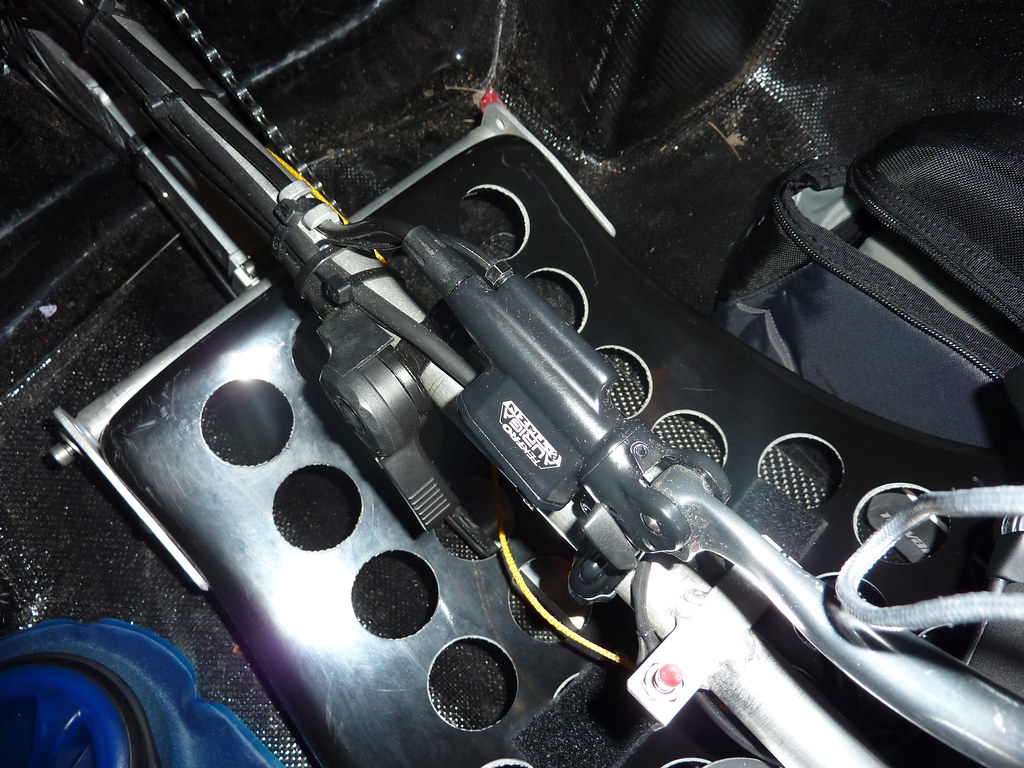
5. **Brake System Repairs (Beyond Pads/Rotors)**
To be fair, replacing brake pads and rotors is a relatively common DIY task for many mechanically inclined individuals. However, the brake system as a whole is your car’s single most important safety feature, and any repair involving it demands absolute precision. “Few safety problems with a vehicle are as dire as malfunctioning brakes,” and getting this repair wrong could have catastrophic consequences for you and others on the road.
A complete brake job involves far more than just pads. It also encompasses calipers, rotors, wheel bearings, and brake fluid, all of which must function perfectly in sync. Modern vehicles further complicate matters with anti-lock brakes (ABS) and electronic parking brakes, adding layers of complexity that require specialized knowledge and diagnostic tools. Any error in these components can severely compromise your vehicle’s stopping power and stability.
Crucially, brake line repairs are an entirely different story. Brake lines carry the hydraulic fluid that enables your brakes to function effectively. A mistake in repairing or replacing these lines could result in complete brake failure, directly leading to a serious accident. Proper installation requires precise connections, and the delicate process of bleeding air from the system is essential to ensure your brakes work efficiently and reliably.
While replacing pads and rotors might cost about $500 at a professional garage, this is an investment in your safety that should not be overlooked. For peace of mind alone, it is best to have a professional change your brakes. If you notice fluid leaking from your brake lines, or if your brakes feel spongy, unresponsive, or you experience squealing, grinding, or shaking when braking, it’s imperative to visit a mechanic immediately.

6. **Suspension System Repairs**
Your car’s suspension system is fundamental to providing a smooth, comfortable ride and, more importantly, keeping your vehicle stable and safe on the road. It also plays a vital role in protecting your vehicle from the unexpected dips and bumps encountered during daily driving. While some suspension parts may appear easily accessible underneath your vehicle, replacing them is far from straightforward.
Many components within the suspension system, such as coil springs, are under immense pressure. Mishandling these parts can lead to “serious injury or death,” in addition to causing extensive damage to other parts of your vehicle. Beyond the immediate danger, suspension repairs demand precise alignment. Mistakes in this area can result in poor handling, uneven tire wear, steering issues, and a cascade of other costly problems down the road, potentially even leading to accidents.
More complex suspension repairs, involving components like control arms, ball joints, or advanced air suspension systems, require specialized tools and advanced mechanical knowledge. An improperly installed component can impact the handling of your ride and may cause premature wear on other car parts. If your vehicle is more bouncy over bumps, lunges forward when braking, has oil coming out of the shocks or struts, or sits lower on one side when parked, these are clear indicators that professional attention is needed.
Given the critical role of the suspension system in vehicle safety and handling, and the inherent risks associated with its complex components, these repairs are unequivocally best left to the professionals. They have the expertise to ensure proper installation, alignment, and functionality, safeguarding both your ride quality and your well-being.
Read more about: Buyer’s Regret: 12 Compact and Small Cars That Leave Owners Wishing for a Do-Over

7. **Air Conditioning System Repairs**
There’s nothing quite as frustrating as your car’s air conditioning system failing, especially during hot weather. The immediate temptation might be to grab an over-the-counter AC recharge kit for a quick fix, but this is a decision you should seriously reconsider. Air conditioning systems are complex, sealed units that necessitate specialized knowledge and tools for accurate diagnosis and repair.
Firstly, the refrigerants used in these systems are classified as toxic. While their toxicity levels are generally low, any misuse or improper handling can pose dangers to your health and the environment. Moreover, because your vehicle’s AC system is designed to be closed, you shouldn’t ordinarily need to refill or top off your refrigerant. If your vehicle is low on refrigerant, it’s a strong indicator of a leak or a more serious underlying issue.
Simply adding more refrigerant without addressing the root cause is often a waste of money and can mask a problem that will only worsen over time. DIY attempts in this area can lead to further refrigerant leaks or even complete system failures, turning a potentially manageable repair into a much costlier predicament. Professional AC repairs can range from $150 to $1,500, depending on the specific issue, but a botched DIY job could result in exponentially higher expenses.
When your AC is only blowing hot air, making strange noises, or only blows cold when driving, these are clear signs it’s time to schedule an AC service with a professional. Trusting these repairs to experts ensures proper diagnosis, safe handling of refrigerants, and a lasting solution, helping you avoid future complications and keeping your cabin cool when you need it most.
Now that we’ve navigated the initial critical repairs, let’s delve deeper into seven more high-stakes vehicle fixes that absolutely demand the hands of an expert. These aren’t just about saving a buck; they’re about ensuring the very integrity and safety of your ride.
Read more about: Don’t Let These Simple Mistakes Cost You! How to Avoid Instantly Voiding Your Home Warranty
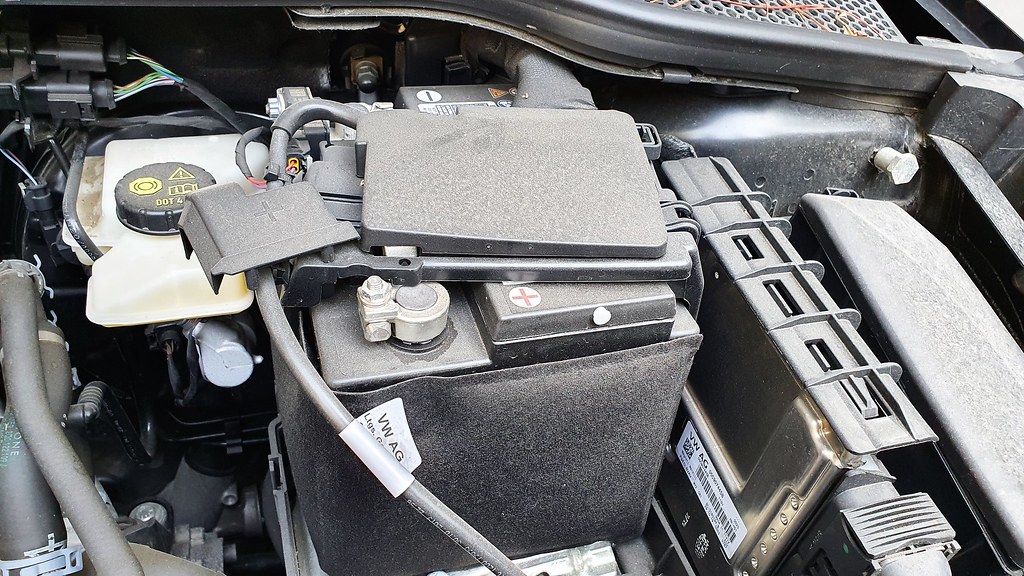
8. **Electrical System Repairs**
Modern automobiles are, at their core, sophisticated networks of interconnected electronic systems. From the engine control unit (ECU) meticulously managing performance to the complex array of sensors, wiring harnesses, and computer modules that orchestrate everything from your infotainment system to power windows, a car’s electrical architecture is remarkably intricate. This complexity makes troubleshooting and repairing electrical issues a realm where precision and specialized knowledge are paramount.
Attempting to diagnose or fix electrical problems without the right diagnostic tools and a deep understanding of these complex circuits can swiftly lead to frustration and, more critically, significant damage. One wrong move, a misplaced wire, or an incorrect connection, and you could inadvertently short-circuit an expensive module, incapacitate an entire system, or even render your entire car inoperable. The inherent sensitivity of these electronic components demands an expert touch, far beyond the scope of a casual DIY enthusiast.
Specialized auto shops and dealerships possess proprietary software and advanced diagnostic tools specifically designed to pinpoint and rectify electrical glitches accurately. If you’re experiencing baffling issues with your car’s lighting, inconsistencies with power windows, or any erratic behavior from your dashboard electronics, these are definitive signals that it’s time to entrust your vehicle to a professional technician. Their expertise ensures that repairs are not only effective but also prevent further, more costly complications down the line.
Read more about: Don’t Let These Simple Mistakes Cost You! How to Avoid Instantly Voiding Your Home Warranty

9. **Windshield Repairs**
A cracked or chipped windshield might appear to be a mere cosmetic blemish, but it is, in reality, a serious safety hazard and a critical component of your vehicle’s structural integrity. Far from being just a piece of glass, the windshield plays an indispensable role in maintaining the car’s roof strength during a rollover and provides a crucial support for airbag deployment. Its importance extends well beyond clear visibility; it’s a fundamental part of your car’s safety cell.
The allure of “easy fix” kits seen in commercials can be tempting, but attempting to repair a chip or crack yourself often exacerbates the problem. As automotive experts like Rich Main from Vista Glass have observed, DIY attempts frequently lead to disastrous outcomes. He recounted instances where customers used superglue, nail polish, or even duct tape, only to see cracks spread, requiring a complete windshield replacement. One harrowing account involved duct tape failing on the highway, causing a massive crack that obscured the driver’s view and led to a serious accident with $20,000 in damages.
These stories underscore a vital truth: “Windshields are safety equipment. DIY fixes won’t stand up to weather and impacts.” Professional repair for a chip or crack is remarkably affordable, typically around $75 at a licensed garage, and ensures the job is done correctly. Conversely, replacing an entire windshield costs approximately $500, a cost that is almost guaranteed if a DIY attempt fails. Proper installation by a certified auto glass specialist involves high-quality adhesives and precise placement, ensuring the windshield can withstand daily driving stresses and protect occupants in a collision. For your safety and the structural soundness of your vehicle, this is one repair that unequivocally belongs in expert hands.
Read more about: The 8 Most Common Reasons Why Your Classic Car’s Heater Fails in Winter: A Comprehensive Guide
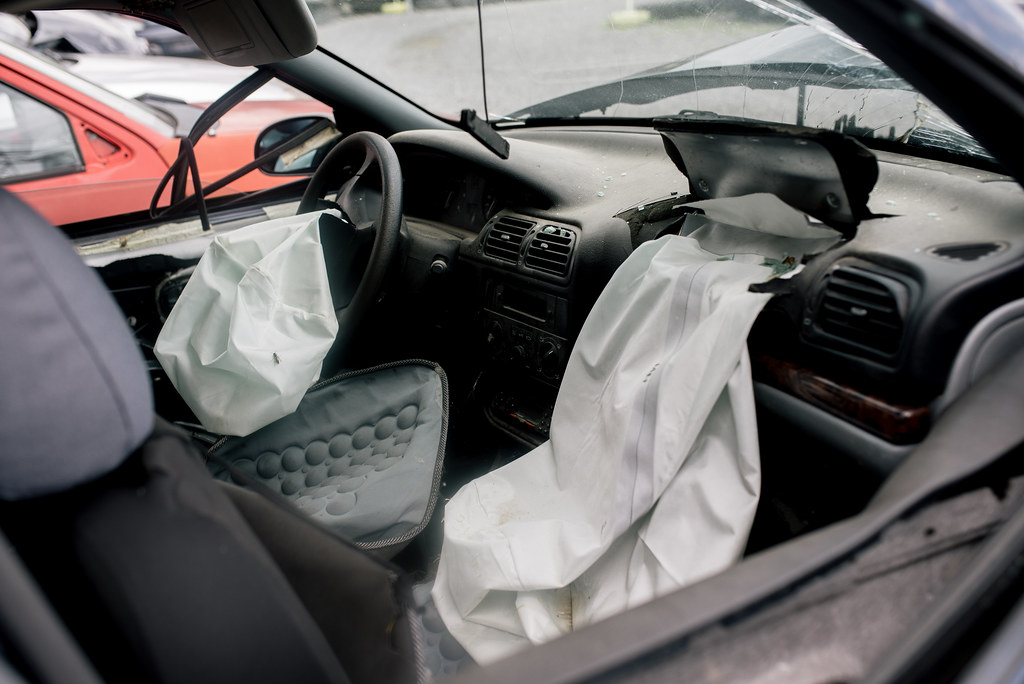
10. **Airbag Replacement**
Airbags are among the most vital safety innovations in modern vehicles, meticulously engineered to deploy in milliseconds during a collision to protect occupants from severe injury. These life-saving devices are far more complex than simple cushions; they are integral components of a sophisticated restraint system, relying on an array of sensors, accelerometers, and a dedicated control unit to function correctly and precisely when needed most.
Given their critical safety function, attempting to replace or repair an airbag yourself is an extremely high-risk endeavor. The process involves navigating intricate electrical systems and handling highly sensitive sensors and inflators. Any misstep during a DIY attempt could result in an accidental airbag deployment, which not only causes significant damage to the vehicle but can also lead to serious personal injury, given the explosive force with which airbags deploy. It’s a risk simply not worth taking.
Furthermore, once airbags have deployed in an accident, they require meticulous reinstallation and recalibration. This isn’t a plug-and-play task; it demands specific tools, proprietary diagnostic software, and specialized knowledge to ensure that the new airbags are properly integrated into the vehicle’s safety system. Improper installation carries the gravest consequence: the airbags might fail to deploy in a future accident, tragically compromising your safety and the safety of your passengers. If your airbag light is illuminated, or if your vehicle has been involved in an accident that triggered airbag deployment, consulting a certified technician for professional repair or replacement is not just advisable, it’s absolutely essential.
Read more about: Buyer’s Regret: 12 Compact and Small Cars That Leave Owners Wishing for a Do-Over
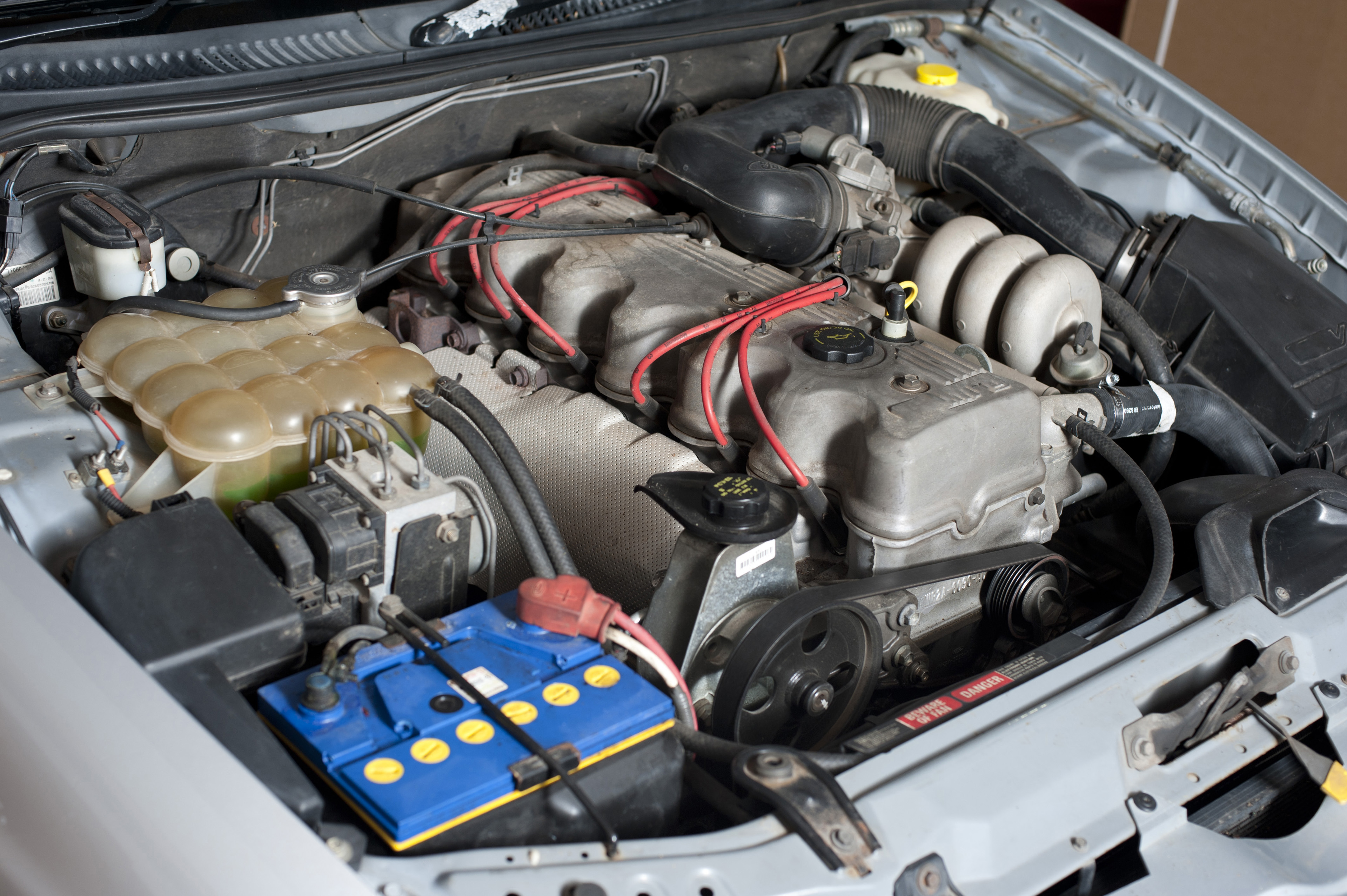
11. **Engine Diagnostics**
Few dashboard lights stir as much immediate concern as the illuminated “check engine” light. It’s a cryptic messenger, prompting many vehicle owners to don their amateur sleuth hats and venture under the hood. The temptation to uncover the mystery yourself, perhaps with the aid of an inexpensive code reader, is understandable. However, this seemingly straightforward quest for answers can quickly lead down a rabbit hole of misdiagnosis and potential damage, with significant financial implications.
The reality is that the “check engine” light can signify an astonishingly wide spectrum of issues. As one auto expert succinctly puts it, it “could be on simply because your gas cap is not screwed on tight enough, or because your car is overheating and the engine is about to blow.” This vast range, from trivial to catastrophic, underscores the absolute necessity of professional expertise. Unless you possess “very expensive automotive diagnostic equipment” and the accompanying interpretive skills, your chances of accurately pinpointing the root cause are slim at best. Furthermore, haphazardly “poking around under the hood” without proper training can easily introduce new problems or exacerbate existing ones, turning a manageable repair into a much larger headache.
Bringing your vehicle to a trusted, local repair shop for a professional diagnostic test, typically costing between $100 and $130, is a prudent investment. As Lauren Fix, founder of Car Coach Reports, wisely advises, a professional diagnosis can prevent further issues and even restore lost fuel economy, with the light potentially “cost[ing] you up to 40% of your fuel economy.” If you notice persistent engine misfires, a loss of power, an engine that runs or idles rough, knocking sounds, or if your car simply won’t start, these are unequivocal indicators that it’s time for expert diagnosis. Don’t gamble with the heart of your vehicle; let the pros unravel the mystery accurately and efficiently.
Read more about: 13 Essential Red Flags: Your Step-by-Step Guide to Inspecting a Used Performance Car Like a Pro
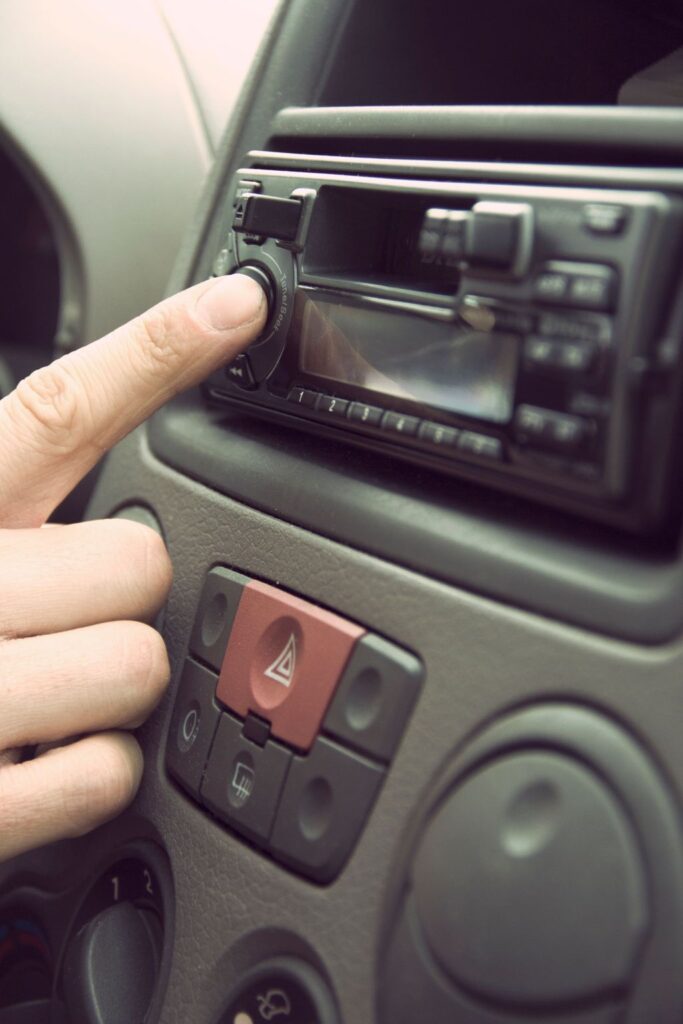
12. **Aftermarket Audio/Video Installation**
In an age where seamless connectivity and entertainment are highly valued, upgrading your car’s audio system or adding a DVD player might seem like a straightforward, gratifying DIY project. The thought often is, “Please. I can install my own radio.” After all, isn’t it just a matter of swapping out units and connecting a few wires? This perception, unfortunately, belies the inherent complexity and potential pitfalls lurking beneath the surface of seemingly simple electrical installations in modern vehicles.
The critical challenge with installing any aftermarket audio or video component lies in its integration with your car’s sophisticated electrical wiring system. Even minor errors in wiring can have severe consequences, ranging from “short circuiting the electrical system in your car” to, in extreme cases, “causing an electrical fire in the vehicle.” It’s not just about getting power to the new device; it’s about ensuring proper grounding, correct voltage, and harmonious communication with the vehicle’s existing electronics without introducing dangerous imbalances or faults.
Beyond the significant safety risks, there’s the sheer frustration of dedicating hours to wiring up a new system, only to discover it doesn’t work at all. Rectifying such a botched DIY job often proves more expensive than if you had simply engaged a qualified mechanic from the outset, with professional installations typically costing between $500 and $1,000. For those seeking in-car entertainment without the inherent electrical hazards, a pragmatic alternative exists: “you could simply go to Walmart and buy a portable DVD system that your kids can use in the car for around $100.” This avoids the risks and ensures peace of mind, proving that some DIY savings just aren’t worth the trouble.
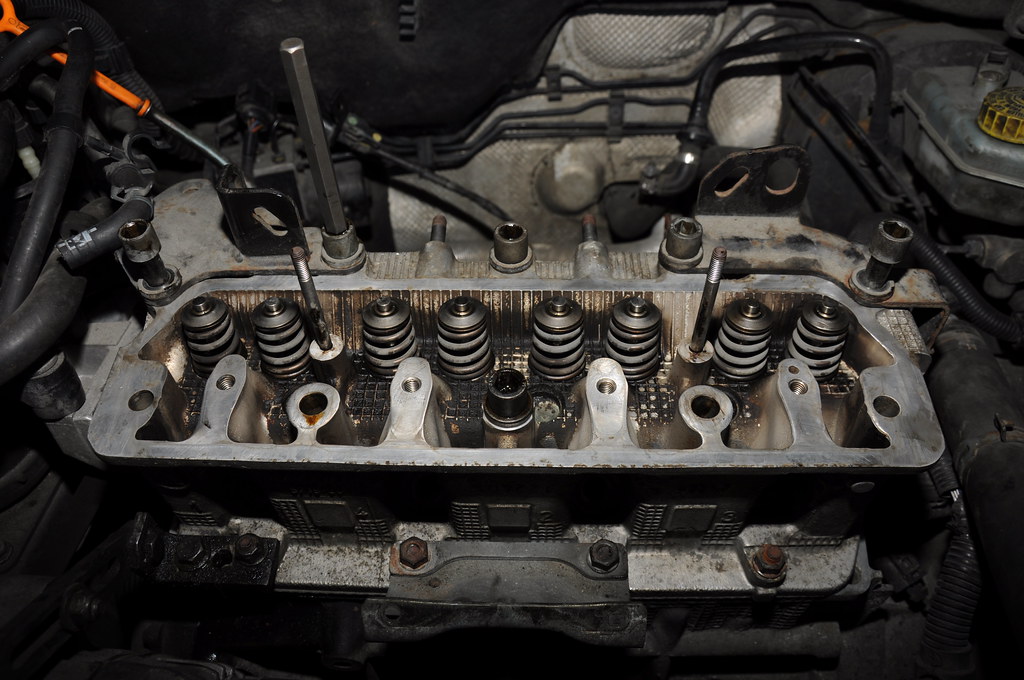
13. **Head Gasket Replacement**
Few automotive phrases strike as much dread into a car owner’s heart as “blown head gasket.” This is undeniably one of the most severe and labor-intensive repairs your vehicle can face, representing a critical failure point within the engine’s core. The head gasket itself is a thin, yet incredibly vital, component situated between the engine block and the cylinder head. Its paramount function is to seal in the volatile internal combustion process, while simultaneously preventing the crucial engine coolant and oil from mixing as they circulate through separate passages.
When a head gasket fails, this delicate balance is shattered, leading to immediate and debilitating problems for your vehicle. Coolant can leak into the oil, forming a sludgy emulsion, or combustion gases can escape, causing overheating and a significant loss of engine compression. The sheer scale of this repair is staggering: “It can take 20 to 25 hours of labor for a qualified mechanic to replace a blown head gasket in a car. That’s half a week or more spent working on one head gasket.” Such an extensive procedure requires specialized tools, meticulous attention to detail, and a deep understanding of engine reassembly.
Given the immense time and expertise required, the professional cost for this repair can easily “top $3,000.” Attempting such a monumental task in your home garage, without the requisite training and equipment, is a recipe for disaster. If a head gasket replacement is executed incorrectly, “you could permanently damage your car’s engine,” potentially rendering the entire vehicle irreparable and forcing an early trip to the scrap yard. When a head gasket blows, your vehicle becomes inoperable, making it a repair that absolutely necessitates the skilled hands of a seasoned professional to ensure the engine’s integrity and future functionality.
Read more about: Buyer’s Regret: 12 Compact and Small Cars That Leave Owners Wishing for a Do-Over

14. **Tire Mounting and Balancing**
While changing a flat tire or rotating your wheels are certainly within the realm of capable DIY efforts, the more intricate tasks of mounting new tires onto rims or precisely balancing them should be firmly designated for professional automotive technicians. It might appear to be a simple mechanical process, yet the underlying requirements for safety, precision, and specialized equipment make it ill-suited for the average home mechanic. The consequences of getting these seemingly basic jobs wrong can range from inconvenient to outright dangerous, affecting both your vehicle’s performance and the safety of everyone on the road.
Improper tire mounting, for instance, can lead to severe issues, most notably “flat tires, making driving dangerous for you and other drivers on the road.” The bead of the tire must be perfectly seated on the rim, and specialized machinery is needed to apply the correct pressure and ensure a secure fit without damaging the tire or the wheel. Without this precision, the tire could fail at speed, leading to a sudden loss of control. Furthermore, attempting to use inadequate tools for mounting can cause irreparable damage to the tire’s sidewall or bead, compromising its structural integrity.
Equally critical is the process of tire balancing. Even a slight imbalance in a tire can cause “excessive shaking that can damage other parts of your vehicle,” including suspension components, steering linkages, and wheel bearings, leading to premature wear and tear. Professional garages utilize sophisticated balancing machines that spin the wheel and tire assembly at high speeds to detect imbalances, then precisely apply small weights to counteract them. Achieving this level of precision at home is virtually impossible. Whether you’re swapping winter tires for summer ones or investing in a brand-new set, entrusting these tasks to experts ensures your tires are installed safely, operate smoothly, and contribute to the overall longevity and safe handling of your vehicle.
Read more about: Navigating the Tire Market: 15 Essential Tips to Secure the Best Price and Maximize Value for Your Next Set of Tires
As we’ve journeyed through these critical automotive repairs, a clear theme emerges: while the spirit of DIY is commendable for many tasks, knowing when to defer to professional expertise is paramount. Your vehicle is a complex machine, an investment that transports you, your loved ones, and your livelihood. Attempting high-stakes repairs without the specialized tools, extensive training, and in-depth knowledge of certified mechanics not only jeopardizes your car’s longevity and your financial well-being but, most importantly, your safety on the road. Trusting the professionals with these intricate fixes ensures peace of mind, reliable performance, and a safer journey for everyone. Drive smart, repair wisely, and always prioritize expert care for those jobs that truly demand it.




